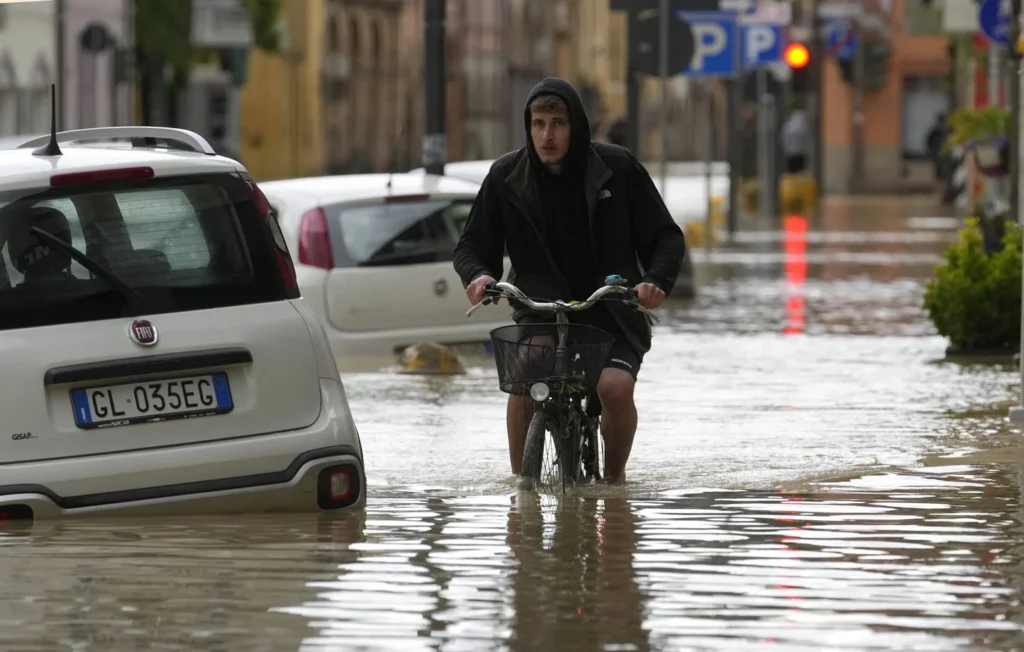In the midst of his small farm engulfed by mist, Pietro Cecchi has his eyes fixed on his bare fruit trees. A season that promises to be bad again, like the previous harvests from this plantation of olive, peach, and apricot trees, a short distance from the province of Siena, in the Italian region of Tuscany. The omnipresent specter of the devastating consequences of climate change looms over the area.
“It only takes one degree below zero or a high temperature, as has been the case quite often in recent years, to lose the entire harvest. And I can tell you that this is what we have been experiencing lately,” said this Italian farmer to MAP, who still maintains a hopeful smile.
Of the entire production, only the fruits protected by greenhouses are spared in this region that suffers under the threat of a multitude of extreme events between flooding and drought, he lamented, recalling the year when the region was hit by an exceptional hailstorm that damaged not only the crops but even the roof of the family home.
“For several years, the Tuscany region has been at the mercy of the whims of the weather. It has been struck by waves of drought and violent floods. The phenomena of climate change are being felt more than ever,” added the farmer.
According to him, some regions in the south of the Peninsula have experienced prolonged drought periods, and on the olive trees, the result is clear: on some branches, there are no fruits, meaning half as many olives as usual and a meager harvest. Worse still, he said, “not only is the harvest half as large, but the olives are even less rich in oil.”
His compatriot, Carlo Confertini, is not better off. Describing the year 2023 as “black,” he stated, in a similar declaration, that he lost his entire olive harvest with “zero production.” A loss he directly attributes to the climate changes prevailing in the region for about twenty years.
According to him, the last five years have been marked by frost episodes causing more than 50% loss of production, followed by significant unexpected rainfall impacting nearly 80% of the production of vineyards and olives. “In addition, there was a heatwave lasting between 60 and 80 days during the summer,” he further recalled.
A few kilometers away, by the sea in the province of Livorno, still in Tuscany, Luciano shares the same observation. “On land as well as at sea, the effects of climate change are being felt. Storms have become commonplace at sea, and many of our colleagues have lost their lives,” emphasizes this seasoned fisherman in his fifties.
This capricious climate, which is becoming increasingly pronounced, prevents fishermen from venturing out to sea at the risk of their lives, he insisted.
According to experts, maritime areas are often crossed by a waterspout, a column of rotating air and water, which capsizes boats, noting that this phenomenon has been increasingly observed in the Mediterranean in recent years.
In this regard, Italian climatologist Luca Mercalli explained to MAP that indeed the Mediterranean is “particularly sensitive” to global warming, calling it a climatic “hot-spot.”
In detail, he attributes this phenomenon to the “size of the Mediterranean which has limited access, the circulation of ocean waters from the Strait of Gibraltar, as well as its proximity to the large African anticyclone that extends from the Sahara Desert to the north.”
According to him, “the Mediterranean is warming faster than other seas and oceans around the world. Greater heat also means greater evaporation of waters into the atmosphere, and thus more intense rains and floods.”
Mediterranean basin countries are bearing the brunt of extreme climatic events, he continued, recalling the tragedies that have cost many lives, notably the cyclone in Libya (2023), the floods in Italy, in Emilia-Romagna (2023 and 2024), and in Spain (2024).
Other countries, including France, Greece, and Cyprus, have had their share of natural disasters in recent years, leaving behind enormous damage.
The meteorology specialist sounded the alarm, warning that “in a warmer world, extreme events are becoming more frequent and more intense.”
“While the average temperature of the northern Mediterranean coastal regions has increased by about 2°C over the last century, the global average has only risen by 1.4°C. This shows the impact of climate change on the Mediterranean region,” Mr. Mercalli pointed out.
Regarding sea level, the Italian specialist indicated that it is rising by about 5 mm per year, due to the melting of polar glaciers and thermal expansion of the waters.
The climatologist warned that “in the future, temperatures, extreme events, and their costs will continue to rise,” lamenting bitterly that “without any respect for the Paris Agreement on climate, humanity prefers to make weapons instead of solar panels.”


